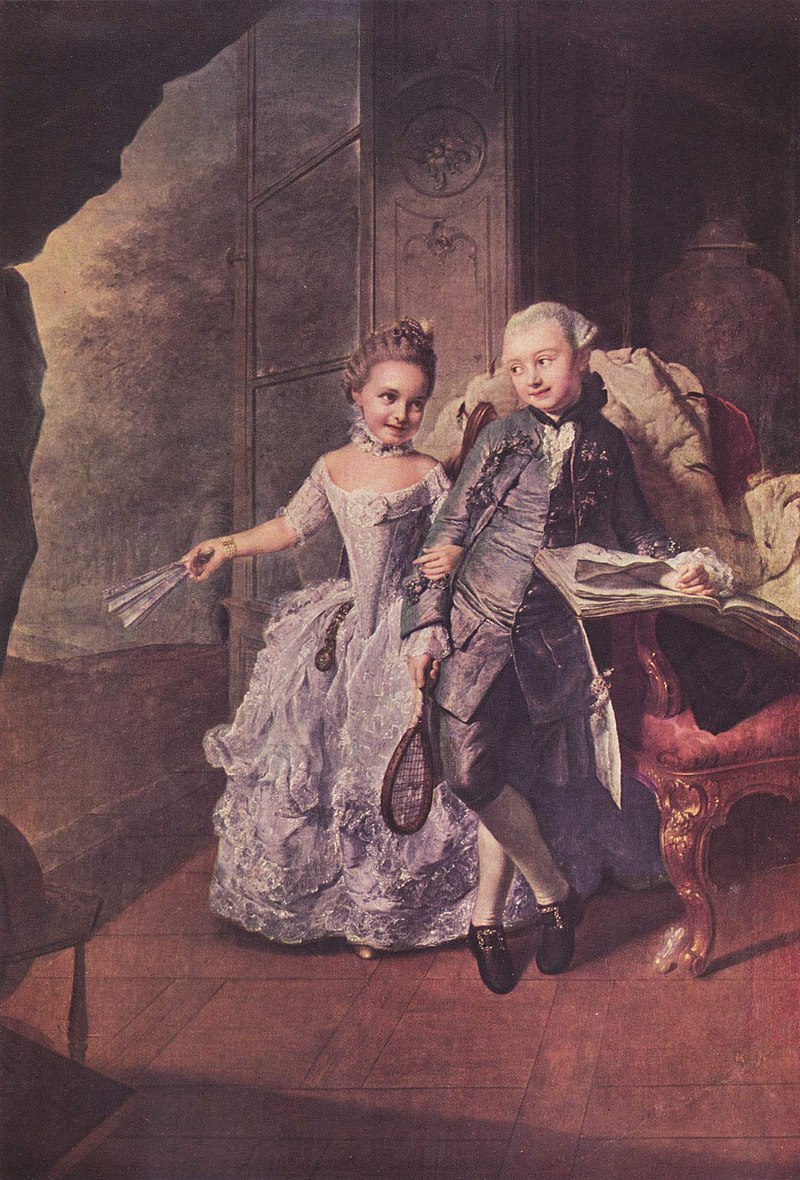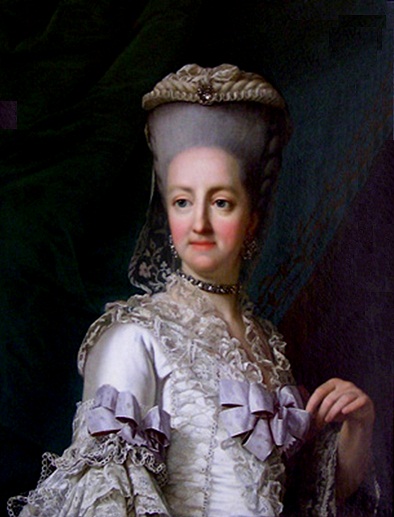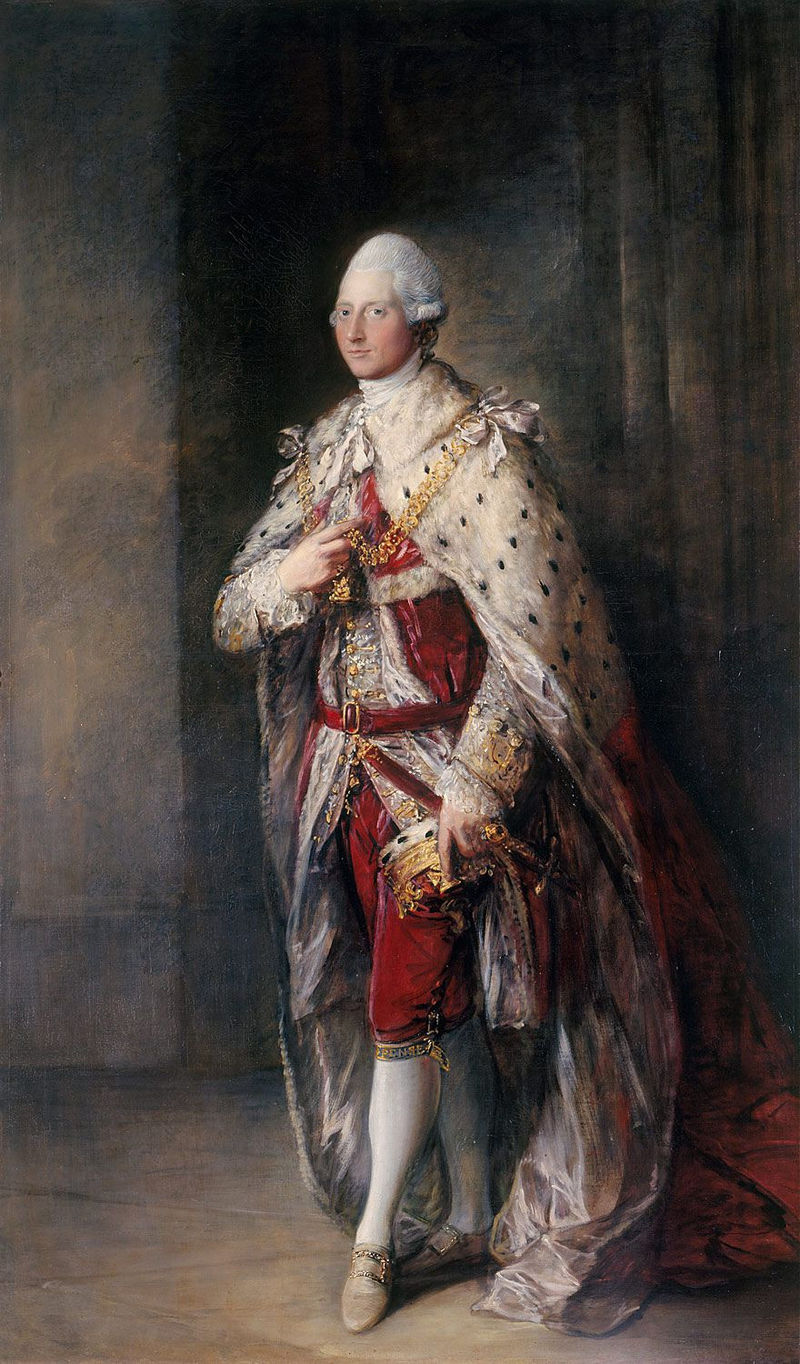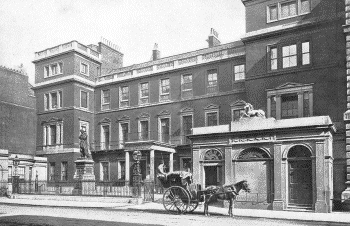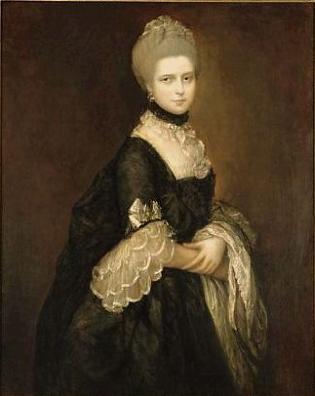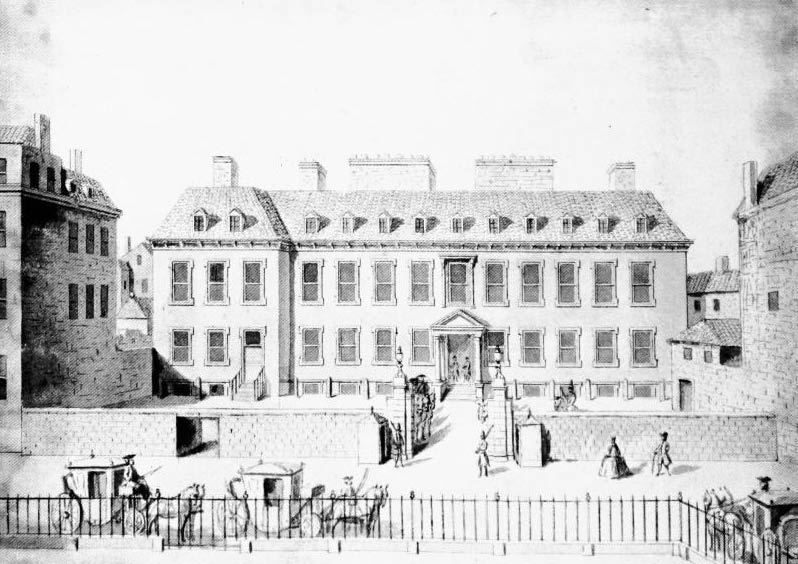by Susan Flantzer
© Unofficial Royalty 2023
On June 1, 2023, Crown Prince Hussein of Jordan married Rajwa Al Saif at Zahran Palace in Amman, Jordan.
Crown Prince Hussein of Jordan

Credit – Wikipedia
Crown Prince Hussein bin Abdullah of Jordan was born at the King Hussein Medical Center in Amman, Jordan on June 28, 1994, the eldest child of the then Prince Abdullah bin Hussein and Rania al Yassin. His father was the eldest son of King Hussein I of Jordan and his second wife Princess Muna al-Hussein, born Antoinette Gardiner in the United Kingdom. When King Hussein I died on February 7, 1999, Abdullah became King of Jordan and respected his father’s wishes, appointing his half-brother Hamzah Crown Prince. In 2004, King Abdullah II stripped Hamzah of the Crown Prince title. As he did not name a replacement, this made Hussein his father’s heir-apparent under the existing succession laws. On July 2, 2009, King Abdullah II issued a decree formally granting Hussein the title of Crown Prince.
Crown Prince Hussein has three younger siblings:
- Princess Iman (born 1996), married Jameel Thermiotis, born Dimitrios Alejandro Thermiótis Hernández
- Princess Salma (born 2000)
- Prince Hashem (born 2005)
Crown Prince Hussein completed his secondary education at King’s Academy in Madaba-Manja, Jordan in 2012. In 2016, the Crown Prince graduated from Georgetown University in Washington DC with a degree in international history. In August 2017, Crown Prince Hussein graduated from the Royal Military Academy Sandhurst in the United Kingdom, a family tradition.
Crown Prince Hussein often attends state and military functions with his father and takes an active interest in the welfare of the Jordanian people. He has also served as Regent when his father is out of the country.
Rajwa Al Saif

Credit – Wikipedia
Born in Riyadh, Saudi Arabia on April 28, 1994, Rajwa Khaled bin Musaed bin Saif bin Abdulaziz Al Saif is the youngest of the four children of Khalid Al Saif and his wife Azza Al Sudairi. Rajwa’s father is the CEO of the Al Saif Group, a privately-owned company with a diverse portfolio of healthcare, construction, and security services businesses. Rajwa is a member of the Al Saif family which dates back to the Subai tribe in the town of Al-Attar in Sudair, Najd, Saudi Arabia, where her ancestors were the sheikhs of the town.
After completing her primary and secondary education in Saudi Arabia, Rajwa attended the School of Architecture at Syracuse University in Syracuse, New York, in the United States, where she received a Bachelor of Arts degree in Architecture. In addition, Rajwa also holds a degree in Visual Communications from the Fashion Institute of Design and Merchandising in Los Angeles, California, in the United States. Rajwa was employed by an architecture firm in Los Angeles, California, and at the time of her engagement, she was employed by Designlab Experience, a design studio in Riyadh, Saudi Arabia.
The Engagement
On August 17, 2022, the Royal Hashemite Court of Jordan announced the engagement of Crown Prince Hussein and Rajwa Al Saif. The engagement ceremony, where Hussein presented Rajwa with a pear-shaped Harry Winston diamond ring, took place in Riyadh, Saudi Arabia at Rajwa’s family home and was attended by members of the Al Saif family and the following members of the Jordanian royal family:
- King Abdullah II and Queen Rania, Crown Prince Hussein’s parents
- Prince Hassan bin Talal, Crown Prince Hussein’s paternal great-uncle
- Prince Hashem bin Abdullah, Crown Prince Hussein’s brother
- Prince Ali bin Al Hussein, Crown Prince Hussein’s paternal half-uncle
- Prince Hashim bin Al Hussein, Crown Prince Hussein’s paternal half-uncle
- Prince Ghazi bin Muhammad, Crown Prince Hussein’s paternal first cousin once removed
- Prince Rashid bin El Hassan, Crown Prince Hussein’s paternal first cousin once removed
Pre-Wedding Celebrations
On May 22, 2023, Queen Rania hosted a traditional henna party in honor of Rajwa Al Saif at the
Madareb Bani Hashem, located at Raghadan Palace. A henna party, a significant pre-wedding celebration that many cultures celebrate, is usually held several days before the wedding. The bride, her female relatives, and her friends celebrate the upcoming wedding by having a professional henna artist apply beautiful, elaborate designs on their hands and feet. Older women may offer guidance and wisdom to the bride-to-be as she begins her married life.
Rajwa’s henna party was a joyous affair, with traditional music and dancing. Traditional Jordanian and Saudi songs were performed by Nedaa Shrara, Diana Karazon, and Zain Awad, with performances by the Haleem Musical Group, the Al-Salt Girls Band, and the Misk Dance Company. The henna party was followed by a dinner hosted by Queen Rania, who gave a speech in honor of her soon-to-be daughter-in-law.
On May 31, 2023, Hussein’s first cousin Prince Omar bin Faisal, hosted a groom’s shower attended by male relatives and friends. That evening, King Abdullah II hosted a dinner party in honor of the wedding at the Royal Madareb Bani Hashem, located at Raghadan Palace. Over 4,000 male guests attended the dinner party that showcased the culture of Jordan’s Hashemite rulers. The guests included representatives of Jordan’s tribes, Circassian and Chechen communities, members of civil society organizations, businesspeople, youth figures, former and current government officials, and army and security agencies personnel.
Wedding Guests – A Partial List
There were 140 guests at the wedding ceremony and over 1,700 guests at the wedding reception so not all the guests attended the wedding ceremony. The guests in bold below attended the wedding ceremony.
Relatives of the Groom
- King Abdullah II and Queen Rania, the groom’s parents
- Princess Iman bint Abdullah and Jameel Alexander Thermiótis, the groom’s sister and brother-in-law
- Princess Salma bint Abdullah, the groom’s sister
- Prince Hashem bin Abdullah, the groom’s brother
- Princess Muna Al Hussein, the groom’s paternal grandmother
- Prince Faisal bin Al Hussein and Princess Zeina Al Feisal, the groom’s paternal uncle and his wife
- Princess Aisha bint Al Hussein, the groom’s paternal aunt
- Princess Zein bint Al Hussein, the groom’s paternal aunt
- Princess Alia bint Al Hussein, the groom’s paternal half-aunt
- Prince Ali bin Al Hussein and Princess Rym Ali, the groom’s paternal half-uncle and his wife
- Prince Hashim bin Al Hussein and Princess Fahdah Al Hashim, the groom’s paternal half-uncle and his wife
- Princess Raiyah bint Al Hussein and Faris Ned Donovan, the groom’s paternal half-aunt and her husband
- Princess Firyal, the groom’s former paternal great-aunt
- Prince Talal bin Muhammad and Princess Ghida Talal, the groom’s paternal first cousin once removed and his wife
- Prince Ghazi bin Muhammad and Princess Miriam Ghazi, the groom’s paternal first cousin once removed and his wife
- Princess Taghrid Muhammad, the groom’s paternal great-aunt
- Prince Hassan bin Talal and Princess Sarvath El Hassan, the groom’s paternal great-uncle and his wife
- Princess Rahma bint El Hassan, the groom’s paternal first cousin once removed
- Princess Sumaya bint El Hassan, the groom’s paternal first cousin once removed
- Prince Rashid bin El Hassan and Princess Zeina Rashid, the groom’s paternal first cousin once removed and his wife
- Princess Basma bint Talal, the groom’s paternal great-aunt
- Ilham Al-Yassin, the groom’s maternal grandmother
- Dina Al-Yassin and Sherif Zoubi, the groom’s maternal aunt and her husband
- Majdi Al-Yassin and Rym Haurani, the groom’s maternal uncle and his wife
Relatives of the Bride
- Khaled Al Saif and Azza Al Sudairi, the bride’s parents
- Faisal Al Saif, the bride’s brother
- Nayef Al Saif, the bride’s brother
- Dana Al Saif, the bride’s sister
Foreign Royalty – Current Monarchies
- Crown Prince Salman bin Hamad bin Isa Al Khalifa of Bahrain, representing his father Sheikh Hamad bin Isa bin Salman Al Khalifa, King of Bahrain, and his brother Sheikh Nasser bin Hamad Al Khalifa of Bahrain
- King Philippe of the Belgians and his daughter and heir apparent The Duchess of Brabant
- Queen Jetsun of Bhutan, representing her husband King King Jigme Singye Wangchuck of Bhutan, and her sister-in-law Princess Euphelma Choden of Bhutan
- Hassanal Bolkiah, Sultan of Brunei and his son Prince ‘Abdul Mateen of Brunei
- Crown Prince Frederik of Denmark and his wife Crown Princess Mary, representing his mother Queen Margrethe II of Denmark
- Princess Takamado of Japan, representing Emperor Naruhito of Japan, and her daughter Princess Tsuguko of Takamado
- Sheikh Ahmad Al Abdullah Al Sabah of Kuwait and Sheikha Muna Al-Klaib of Kuwait, representing Nawaf Al-Ahmed Al-Jaber Al-Sabah, Emir of Kuwait
- Hereditary Prince Alois of Liechtenstein and his wife Hereditary Princess Sophie, representing his father Prince Hans-Adam II of Liechtenstein
- Prince Johann Wenzel of Liechtenstein and his wife Princess Felicitas of Liechtenstein
- Prince Sébastien of Luxembourg, representing his father Grand Duke Henri of Luxembourg
- The Yang di-Pertuan Agong of Malaysia and his wife Raja Permaisuri Agong
- King Willem-Alexander of the Netherlands and his wife Queen Máxima
- The Princess of Orange, daughter and heir apparent of King Willem-Alexander of the Netherlands
- Crown Prince Haakon of Norway, representing his father King Harald V of Norway
- Crown Prince Theyazin bin Haitham Al Said of Oman, representing his father Sultan Haitham bin Tariq Al Said of Oman
- Sheikha Moza bint Nasser Al-Missned of Qatar, representing her son Sheikh Tamim bin Hamad bin Khalifa Al Thani, Emir of Qatar, and her son Sheikh Khalifa bin Hamad Al Thani
- King Juan Carlos I of Spain and his wife Queen Sofía of Spain, representing their son King Felipe VI of Spain
- Crown Princess Victoria of Sweden and her husband Prince Daniel, representing her father King Carl XVI Gustaf of Sweden
- Sheikh Khaled bin Mohamed Al Nahyan, Crown Prince of Abu Dhabi, representing his father Sheikh Mohamed bin Zayed bin Sultan Al Nahyan, Emir of Abu Dhabi
- The Prince and Princess of Wales, representing his father King Charles III of the United Kingdom
- Princess Beatrice, Mrs. Mapelli Mozzi, niece of King Charles III of the United Kingdom, and her husband Edoardo Mapelli Mozzi
Foreign Royalty – Former Monarchies
- Tsar Simeon II of Bulgaria, his wife Tsaritsa Margarita, their son Kyril, Prince of Preslav, and his partner Katharine Butler
- Crown Prince Pavlos of Greece
- Empress Farah of Iran
- Princess Margareta of Romania, Custodian of the Crown of Romania and her husband Prince Radu
Jordan Government Officials
- Bisher Khasawneh, Prime Minister of Jordan and his wife Rana Sultan
- Ayman Safadi, Deputy Prime Minister of Jordan, Minister of Foreign Affairs
Foreign Dignitaries
- Ahmed Aboul Gheit, Secretary-General of the Arab League and his wife Leila Aboul Gheit
- Philippa Karsera, First Lady of Cyprus
- Entissar el-Sisi, First Lady of Egypt and her daughter Aya el-Sisi
- Abdul Latif and Shanaz Rashid, President and First Lady of Iraq
- Barham and Sarbagh Salih, former President and First Lady of Iraq
- Mustafa Al-Kadhimi, former Prime Minister of Iraq
- Masoud Barzani, former President of Iraqi Kurdistan
- Masrour Barzani, Prime Minister of Iraqi Kurdistan
- Matteo Renzi, former Prime Minister of Italy and his wife Agnese Landini
- Najib Mikati, Prime Minister of Lebanon and his wife May Mikati
- Bilawal Bhutto, Foreign Minister of Pakistan
- Paul and Jeannette Kagame, President and First Lady of Rwanda
- David Cameron, former Prime Minister of the United Kingdom and his wife Samantha Cameron
- Jill Biden, First Lady of the United States and her daughter Ashley Biden
- Nancy Pelosi, Member of the U.S. House of Representatives and her husband Paul Pelosi
Other Notable Guests
- Carole Middleton, mother of The Princess of Wales
- Philippa and James Matthews, sister and brother-in-law of The Princess of Wales
- Ivanka Trump and Jared Kushner
Wedding Attire
Rajwa wore a custom white silk crepe gown by Lebanese designer Elie Saab with long sleeves, an asymmetric neckline, and a draped bodice. The curve-hugging dress featured a long train with cut-out flowers and pearl details. Rajwa wore sensible, pointed-toe white flats. Her hair was styled in loose curls, topped with a diamond tiara, holding the flowing veil in place.
Crown Prince Hussein wore a military uniform with black, white, and red military regalia complete with gold embellishments.
The Wedding Ceremony
Crown Prince Hussein and Rajwa Al Saif were married in an Islamic marriage ceremony known as “katb ktab” at the gazebo in the gardens of Zahran Palace. The 140 guests who attended the wedding ceremony were individually welcomed by King Abdullah II and Queen Rania, the groom’s parents, before proceeding to the gazebo in the palace garden.
At the front of the gazebo was a three-sided seating area for the bride and groom, the imam who would preside over the wedding ceremony, the father of the groom, and the father of the bride, who would serve as witnesses. King Abdullah II sat on the right side. Rajwa’s father Khaled Al Saif sat on the left side next to Royal Hashemite Court Imam Dr. Ahmed Al Khalaileh. After the guests were seated, Crown Prince Hussein arrived alone, dressed in a military uniform, and sat in the middle section, near his father, to await the arrival of his bride.

Prince Hashem escorts the bride as his sisters Princess Iman and Princess Salma follow; Credit – Royal Hashemite Court
Crown Prince Hussein’s three younger siblings accompanied Rajwa to Zahran Palace and walked with her as she made her way to her groom waiting in the gazebo. Prince Hashem (age 18) escorted Rajwa, Princess Iman (age 26) and Princess Salma (age 22) followed behind the bride, fixing her dress train and veil as she made her way through the garden to the gazebo. Rajwa walked down the aisle accompanied by Prince Hashem. Princess Iman and Princess Salma followed behind, adjusting the bride’s train several times. Rajwa sat next to Hussein, close to her father.

Royal Hashemite Court Imam Dr. Ahmed Al Khalaileh and Crown Prince Hussein look on as Rajwa signs the marriage contract; Credit – Royal Hashemite Court
Royal Hashemite Court Imam Dr. Ahmed Al Khalaileh, who was appointed to his position in January 2021, presided over the wedding ceremony. Hussein and Rajwa signed the marriage contracts with their fathers acting as their two witnesses. In addition, Prince Hassan, King Hussein’s I’s only surviving brother and Crown Prince Hussein’s great-uncle, signed the marriage contract.
Before exchanging rings, Hussein and Rajwa recited the first verse from the Quran: “In the name of God (Allah), the Compassionate and Merciful. Praise be to God, Lord of the worlds, the Compassionate and Merciful, Master of the Day of Judgement. Thee we worship and from Thee we seek help. Guide us upon the straight path, the path of those whom Thou hast blessed, not of those who incur wrath, nor of those who are astray.”
When the wedding ceremony was over, a few women performed the Zaghrata, an ululation traditionally used to express happiness at Jordanian and Arab celebrations. The newlyweds kissed each other on the cheeks and exited to the garden where they greeted the wedding guests. Then they traveled in a motorcade, through the streets of Amman, where huge crowds turned out to greet them, ultimately arriving at Al Husseiniya Palace, where their wedding reception took place.
The first fifty-five minutes of the YouTube video below show the arrival of the wedding guests, the arrival of the groom and bride, and the wedding ceremony.
The Wedding Reception
The wedding reception was held at Al Husseiniya Palace, which was built in 2006, and houses the offices of King Abdullah II, Queen Rania, and Crown Prince Hussein. Over 1,700 guests attended the wedding reception.
The arrival of Crown Prince Hussein and Princess Rajwa was announced with the customary zaffa or wedding march played by the Jordan Armed Forces Musical Band, with drums, bagpipes, singing, and clapping. The couple passed below an Arch of Sabers as they made their way to the outdoor reception courtyard. The newlyweds ascended the stage and were joined by King Abdullah II and Queen Rania and Rajwa’s parents Khaled Al Saif and Azza Al Sudairi to greet the over 1,700 guests.
The reception included performances from the national orchestra, a choir, local and regional singers, and Jordanian bands and dance troops, one of which performed the Dabkeh, a Levantine Arab folk dance. Tributes were paid to the groom’s military career and the bride’s Saudi Arabian heritage, and of course, there was the cutting of the wedding cake.

King Abdullah II, Queen Rania, Crown Prince Hussein, and Princess Rajwa with distinguished guests at the wedding reception; Credit – Royal Hashemite Court
This article is the intellectual property of Unofficial Royalty and is NOT TO BE COPIED, EDITED, OR POSTED IN ANY FORM ON ANOTHER WEBSITE under any circumstances. It is permissible to use a link that directs to Unofficial Royalty.
Works Cited
- Armani, Syed. (2023) What to know about the Jordanian Crown Prince’s Wedding, Time. Available at: https://time.com/6283682/jordan-hashemite-royal-wedding/ (Accessed: 05 July 2023).
- Inside the Jordanian royal wedding of HRH Crown Prince Hussein and HRH Princess Rajwa al-Saif (2023) Vogue Arabia. Available at: https://en.vogue.me/culture/jordanian-royal-wedding-crown-prince-hussein-rajwa-al-saif-pictures/ (Accessed: 05 July 2023).
- Rajwa al Saif Henna Night: What happens at a Henna Party? (2023) Available at: https://www.harpersbazaararabia.com/culture/royal-watch/royal-henna-party (Accessed: 05 July 2023).
- Queen Rania Hosts Dinner Party in Celebration of Crown Prince Al Hussein and Miss Rajwa’s Upcoming Wedding: Queen Rania (2023) Queen Rania Official Website. Available at: https://www.queenrania.jo/en/media/press-releases/queen-rania-hosts-dinner-party-celebration-crown-prince-al-hussein-and-miss (Accessed: 05 July 2023).
- Statement from the Royal Hashemite Court (2023) Statement from the Royal Hashemite Court | Royal Hashemite Court. Available at: https://rhc.jo/en/media/news/statement-royal-hashemite-court-12 (Accessed: 05 July 2023).
- زفاف الأمير الحسين ورجوة آل سيف (Wedding of Hussein, Crown_Prince of Jordan, and Rajwa Al Saif) (2023) Wikipedia (Arabic). Available at: https://ar.wikipedia.org/wiki/%D8%B2%D9%81%D8%A7%D9%81_%D8%A7%D9%84%D8%A3%D9%85%D9%8A%D8%B1_%D8%A7%D9%84%D8%AD%D8%B3%D9%8A%D9%86_%D9%88%D8%B1%D8%AC%D9%88%D8%A9_%D8%A2%D9%84_%D8%B3%D9%8A%D9%81 (Accessed: 05 July 2023).
- Wedding of Hussein, Crown Prince of Jordan, and Rajwa Al Saif (2023) Wikipedia. Available at: https://en.wikipedia.org/wiki/Wedding_of_Hussein,_Crown_Prince_of_Jordan,_and_Rajwa_Al_Saif (Accessed: 05 July 2023).

